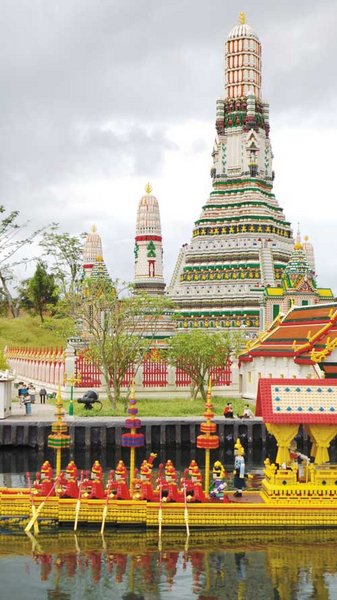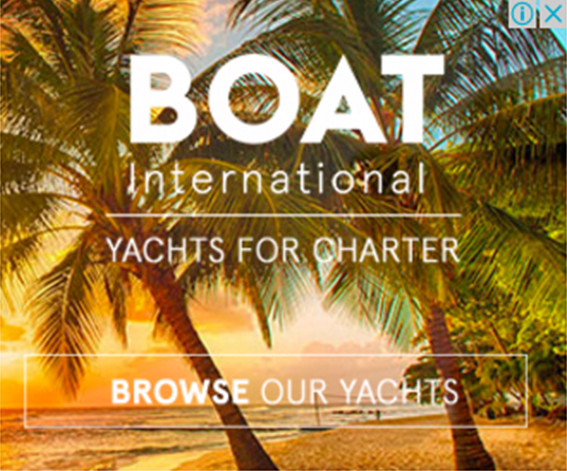A Guide to Johor Bahru, Malaysia
For kids and hipsters alike, Malaysia’s Johor Bahru is rising from transport hub to top tourist destination.
To Singaporeans, Johor Bahru in southern Malaysia is something of a weekend playground, thanks to its location right across the causeway. To many Thais, though, the last we heard about the capital city of Johor State was probably in geography class at high school. But trust us, JB will be firmly in the spotlight as a top tourist destination in the year to come, thanks to the new theme parks and edgy shops.
From JB to Iskanda
Johor Bahru is Malaysia’s second most populous city after Kuala Lumpur, but in terms of tourism, it lags far behind. Founded in 1855, it has long been regarded as only a transport hub between the mainland and Singapore. That’s changed recently. In 2006, the Malaysian government announced the mega development project Iskandar Malaysia, aimed at revamping 2,216.3 sq km of land on the southwest corridor of Johor Bahru into a new economic district. Iskandar Malaysia, named after its former name, contains residential, business and recreation areas, and has already attracted big international investors, including theme parks Legoland and Sanrio (Hello Kitty).
Theme Park Haven
 “We believe [Iskandar] will be a successful project with a great location to attract both domestic [Malaysian] and international tourists. We’re expecting 1.5 to 2 million visitors in the first year and, four months after our grand opening, it seems that we will hit our target,” says Siegfried Boerst, general manager of Legoland Malaysia. Legoland (RM140/adult/day, RM110/3-11yrs kid/day. Open Mon-Fri 10am-6pm, Sat-Sun 10am-8pm. Closed on Wed. www.legoland.com.my) is Iskandar Malaysia’s first completed project and has been open to the public since September 2012. This 76-acre theme park is the first Legoland in Asia, featuring seven themed areas complete with more than 15,000 Lego models created from 15 million Lego bricks. (Rest assured, the rides are not built from Lego.) Legoland targets families with young children aged 2-12 years, with a few highlights that adults can enjoy too, including a 4D cinema, a viewing tower and a “miniland” featuring Lego miniatures of some of Asia’s top landmarks, including our own Wat Arun. Soon to be completed next to Legoland are a water park and hotel under the same name, scheduled to open late this year.
“We believe [Iskandar] will be a successful project with a great location to attract both domestic [Malaysian] and international tourists. We’re expecting 1.5 to 2 million visitors in the first year and, four months after our grand opening, it seems that we will hit our target,” says Siegfried Boerst, general manager of Legoland Malaysia. Legoland (RM140/adult/day, RM110/3-11yrs kid/day. Open Mon-Fri 10am-6pm, Sat-Sun 10am-8pm. Closed on Wed. www.legoland.com.my) is Iskandar Malaysia’s first completed project and has been open to the public since September 2012. This 76-acre theme park is the first Legoland in Asia, featuring seven themed areas complete with more than 15,000 Lego models created from 15 million Lego bricks. (Rest assured, the rides are not built from Lego.) Legoland targets families with young children aged 2-12 years, with a few highlights that adults can enjoy too, including a 4D cinema, a viewing tower and a “miniland” featuring Lego miniatures of some of Asia’s top landmarks, including our own Wat Arun. Soon to be completed next to Legoland are a water park and hotel under the same name, scheduled to open late this year.
Less than ten minutes’ drive from Legoland is Puteri Harbour Family Theme Park (RM65/one park/day, RM110/2 parks/day. Open Wed-Mon 10am-6pm). The second level of this four-story structure is home to the first Sanrio Hello Kitty Town (www.playtime.com.my/hello-kitty-town) outside Japan. If you, or your daughters, are fans of the cute Japanese cat, here’s where you can enjoy running around the Hello Kitty house, take jewelry making workshops, enjoy costume dress up and get plenty of photo opportunities with Hello Kitty and her friends. Leave the girls here and take the boys up to the third and fourth floor for The Little Big Club (www.playtime.com.my/little-big-club) where kids can enjoy playing with famous cartoon characters like Barney, Bob the Builder and Thomas & Friends. Getting to Legoland and Puteri Theme Park is easy thanks to the shuttle service from either Johor Bahru Sentral terminal (RM4) or the Singapore border (RM2). There’s also a bus service from the Singapore Flyer (RM20).
Back to the Old Town
Though it seems like most of the fun is happening out of the city, Johor Bahru’s old town is still worth a visit. According to the Iskandar Malaysia development plan, the old town close to the Malaysia-Singapore causeway is earmarked to be a financial district. As most of the heritage sites are along the coastal road, you’ll have no difficulty finding them. The recently renovated Dataran Bandaraya Johor Bahru (or the Clock Tower), which sits in front of Tristle Hotel, was constructed in 1994 and has since been regarded as the town’s signature landmark. The renovation includes new lighting at night-time. Meanwhile, Sultan Abu Bakar State Mosque is probably the must-visit cultural attraction of the town. Despite being named the state mosque, this beautiful structure built from 1892-1900 is more British-colonial than Moorish with architect Tuan Haji Mohamed Arif bin Punak taking inspiration from the late Victorian architectural style.
Hipster Movement
 While the government is pouring money into giant estates, local entrepreneurs are breathing new life into their hometown by creating hip hang-outs. Sat at the corner of Jalan Dhoby is Roost Repurposed & Recycled (Jalan Dhoby. Open daily noon-midnight) where local and visiting hipsters order selections of coffee, beers and salads. This is the newest addition to the Roost family, which belongs to Kenny Lim and his friends. Back in 2005, they launched Roost Juice+Bar on Jalan Dhoby (the same street), a vintage-style, grungy-looking eating room that quickly become a favorite haunt for local trendsetters. “Jalan Dhoby is the only street that has so many historical buildings. So it’s the perfect match for our 70s concept inspired by indie rock and roll movies and music,” Kenny says. In 2009, they opened Roost Bistro in The Zon duty-free area, followed by Roost Repurposed & Recycled six months ago. The place is as chill as they come: buy a drink at the counter downstairs then go kick back upstairs for as long as you please. The décor is pretty similar to all those petite bars you see along Bangkok’s Soi Chamchan (Ekkamai Soi 21): all mix and match furniture, wooden chairs, leather couches and knick-knacks. As a regular visitor to Thailand, Kenny speaks good Thai so do drop by if only to say sawasdee.
While the government is pouring money into giant estates, local entrepreneurs are breathing new life into their hometown by creating hip hang-outs. Sat at the corner of Jalan Dhoby is Roost Repurposed & Recycled (Jalan Dhoby. Open daily noon-midnight) where local and visiting hipsters order selections of coffee, beers and salads. This is the newest addition to the Roost family, which belongs to Kenny Lim and his friends. Back in 2005, they launched Roost Juice+Bar on Jalan Dhoby (the same street), a vintage-style, grungy-looking eating room that quickly become a favorite haunt for local trendsetters. “Jalan Dhoby is the only street that has so many historical buildings. So it’s the perfect match for our 70s concept inspired by indie rock and roll movies and music,” Kenny says. In 2009, they opened Roost Bistro in The Zon duty-free area, followed by Roost Repurposed & Recycled six months ago. The place is as chill as they come: buy a drink at the counter downstairs then go kick back upstairs for as long as you please. The décor is pretty similar to all those petite bars you see along Bangkok’s Soi Chamchan (Ekkamai Soi 21): all mix and match furniture, wooden chairs, leather couches and knick-knacks. As a regular visitor to Thailand, Kenny speaks good Thai so do drop by if only to say sawasdee.
JOHO is a local creative agency started by a group of friends. They revealed their retail outlet JOHO Concept Store (Jalan Tahar, +607-232-1550) last December, selling their original-design merchandise like t-shirts, caps, and stickers. The more we spoke to locals, the more we discovered new things happening in this town—more than we can possibly list here. Perhaps the best way to get started is to visit the Facebook page called “What’s going on in Johor Bahru,” where page admin Euginn posts regular updates on the city’s news and openings.
Getting there
Johor Bahru (JB) is close (about one hour trip) to Singapore, so the best option is to catch a flight with AirAsia, Singapore Airlines, Scoot or THAI Airways from Bangkok to Singapore, and then get a coach from Changi to JB’s Kotaraya II Bus Terminal. But if you plan a week-long trip in Malaysia, it’s better to fly from Bangkok to Kuala Lumpur, where you can get a bus from either the LCCT (low cost) or KLIA (regular) airports to JB. The trip takes six hours, but you can break it up with a half-day visit to the Unesco World Heritage Town of Malacca. Thai nationals do not need a visa to enter Malaysia or Singapore.
Getting around
Taxis are fairly convenient and reliable in JB. Fares start from RM3 for the first two kilometers and then 10 sen for every 115 meters. If you ask the hotel to call a taxi for you, RM2 will be added to the total price. You can also take a bus but it’s pretty difficult for visitors to know which number goes along which route.
Currency
RM1 is roughly B10.
Caution
Our contact at the Ministry of Foreign Affairs recommends that you not wander around JB alone at night. There have been reports of kidnapping cases (mostly targeting Singaporean businessmen) in the not-too-distant past and even though the situation has improved, it’s best to exercise caution. From our own experiences, the old town is fairly safe, even at midnight, but avoid the area opposite City Square, the town’s answer to Siam Paragon. The Royal Thai Embassy in Kuala Lumpur can be reached at +603-2143-2107/2125/2127.
| Address: | A Guide to Johor Bahru, Malaysia, Johor Bahru, Malaysia |
| Report a correction | |










